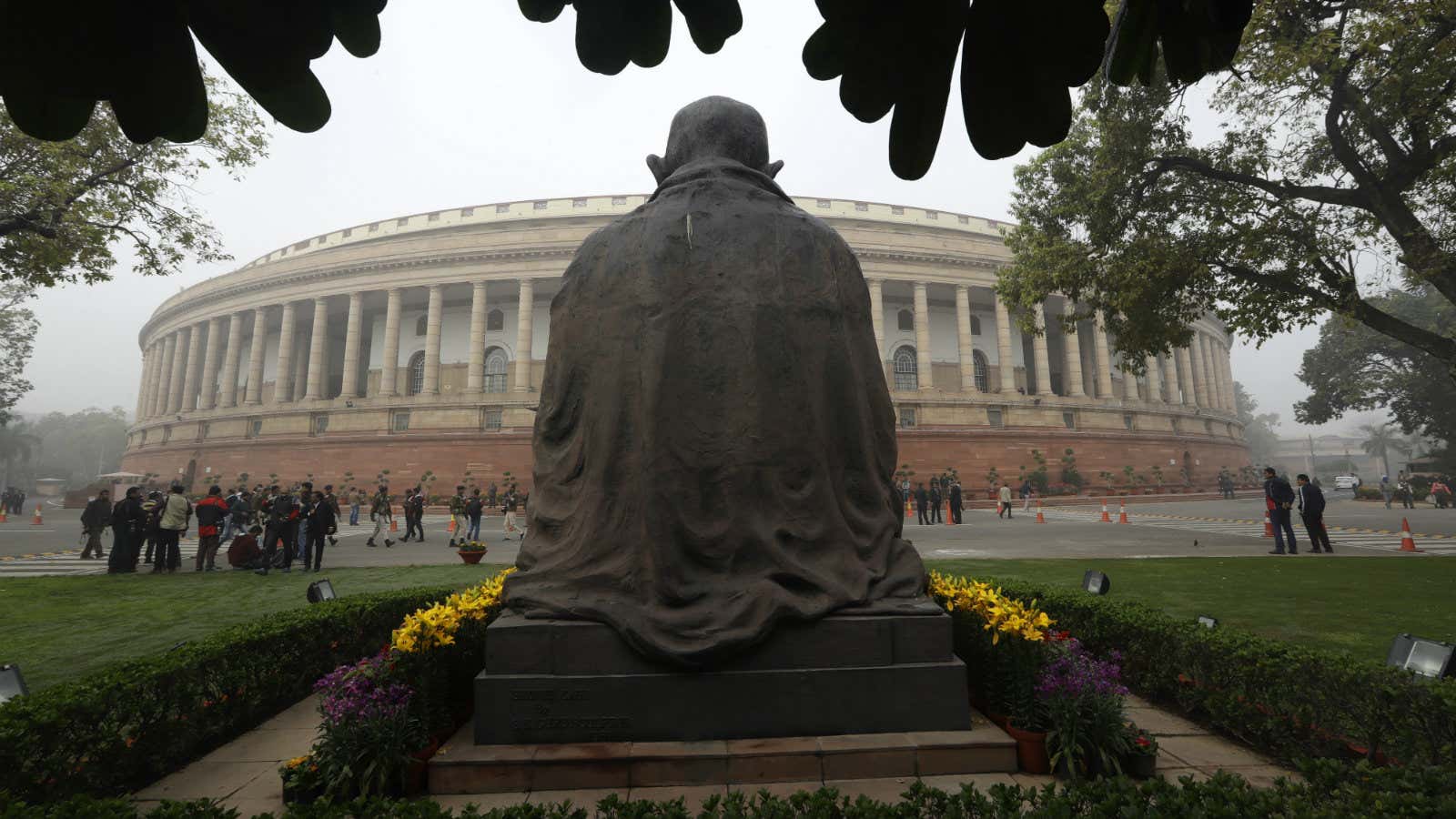Later today (Feb. 01), India’s finance minister Arun Jaitley will present the union budget to parliament. This will be the Narendra Modi government’s last budget before the 2019 general elections. It comes in the wake of several disruptive changes to Asia’s third-largest economy, most recently the goods and services tax regime that came into effect in July 2017.
The budget has always been a highly anticipated event in India, going back to when the country gained independence from the British. In November 1947, independent India’s first finance minister, RK Shanmukham Chetty, broadcast the first budget on the radio after presenting it to parliament. These days, however, the budget unfolds in real time on television and social media.
Here are the stories of some of India’s finance ministers and budgets through the years:
R K Shanmukham Chetty
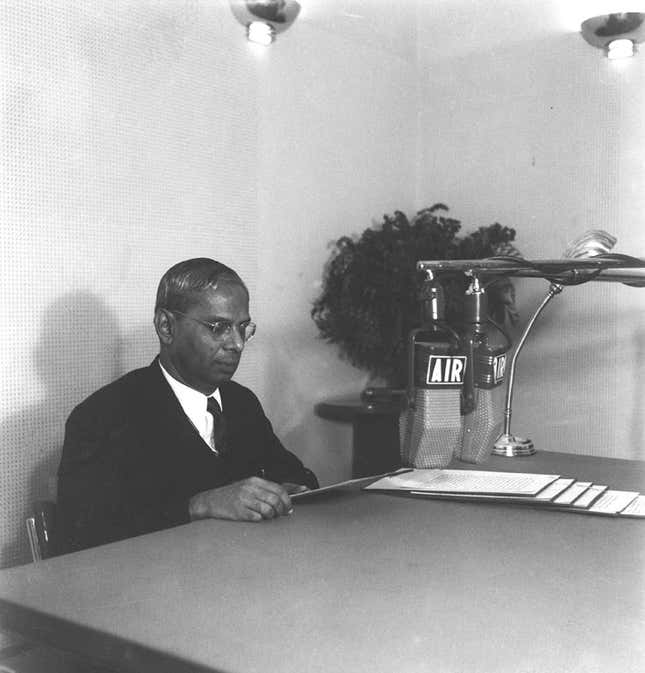
Just a few months after the bloody events that followed the Partition, Chetty presented India’s first budget. In his speech (pdf), Chetty outlined the economic consequences of the division of the country, and the resulting refugee crisis. He highlighted concerns over the availability of food grains and rising prices at a time when agriculture made up for 70% of the economy. During his tenure, prices of essential commodities were decontrolled but this had to be reversed in a month as inflation spiked.
CD Deshmukh
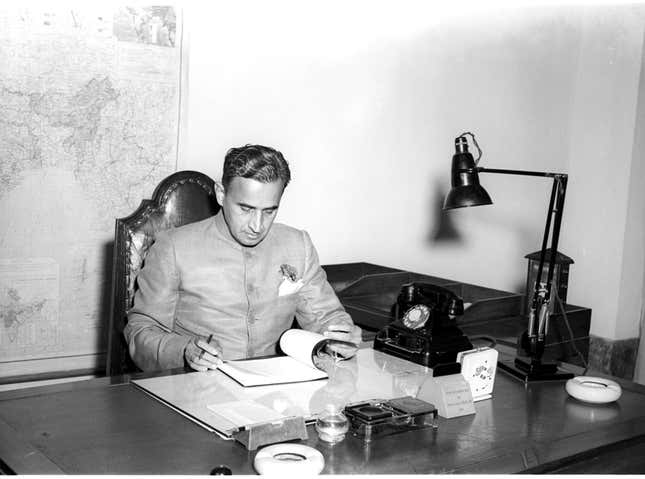
In 1943, CD Deshmukh became the first Indian governor of the Reserve Bank of India, which had till then been headed by British men. He went on to represent the country at the landmark Bretton Woods conference a year later, before becoming finance minister in 1950. He is credited for his focus on creating the country’s irrigation infrastructure and his “Grow More Food Plan.” Over the following years, India witnessed an economic recovery, with an increase in food production and better availability of supplies, besides a fall in inflation. Deshmukh held the position of finance minister until 1956.
TT Krishnamachari
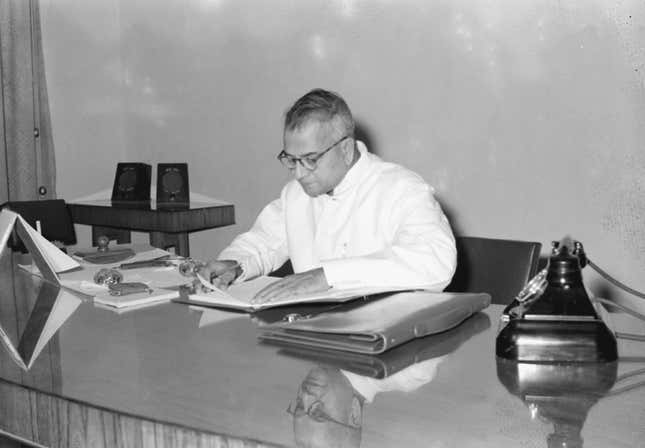
A close associate of India’s first prime minister, Jawaharlal Nehru, Krishnamachari was finance minister twice in the 1950s and 1960s. He’s remembered for being the first to impose a wealth tax and real estate duty in India, and these policies made him unpopular with right-wing politicians and industrialists, the New York Times noted after his death in 1974.
Morarji Desai
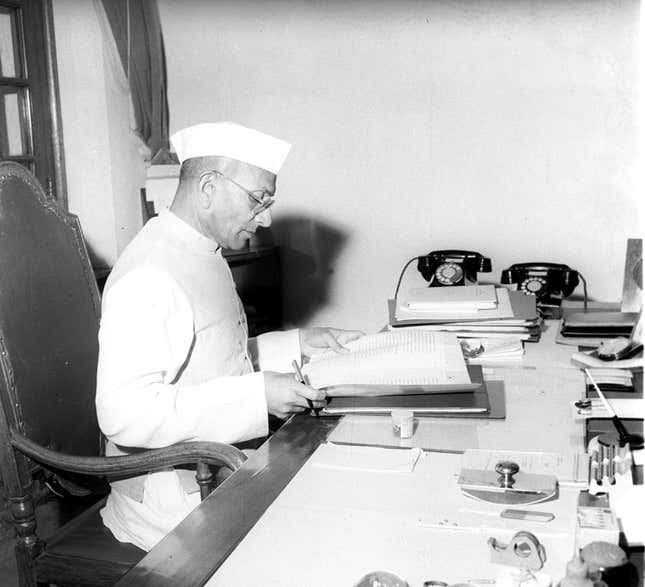
The freedom fighter, Morarji Desai, presented the most number of union budgets—10 over two terms as finance minister between 1958 and 1963 and between 1967 and 1969. He went on to become the prime minister of India in 1977.
Manmohan Singh
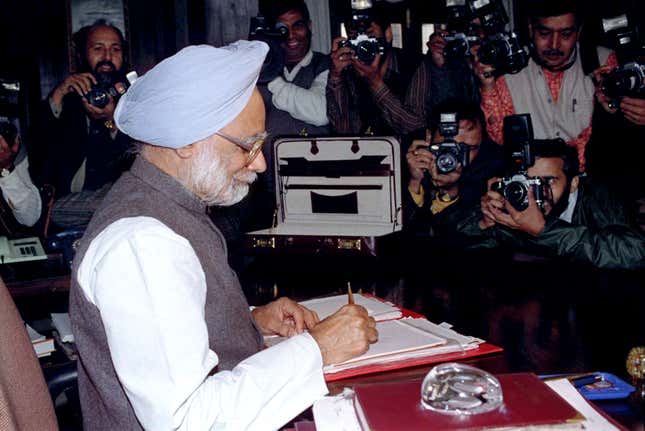
During his time as finance minister between 1991 and 1996, Manmohan Singh presided over a period of dramatic changes. His 1991 budget introduced watershed reforms that liberalised India’s economy and opened it up to the rest of the world, setting it on a course of rapid growth. Between 2004 and 2014, Singh served as the prime minister of India.
Yashwant Sinha
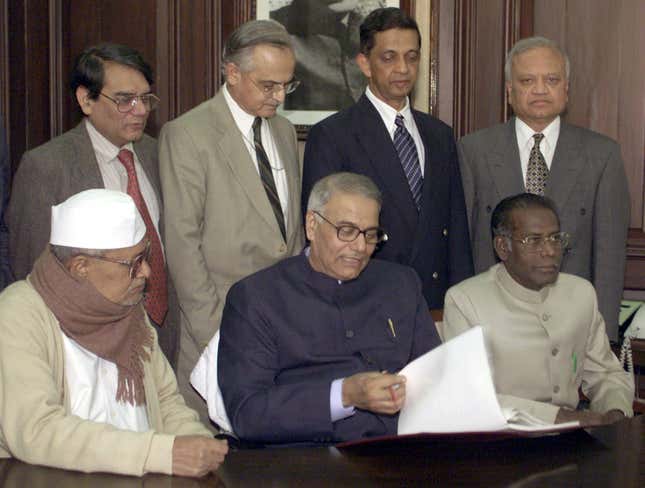
In 1990, Yashwant Sinha briefly served as India’s finance minister, but it was during his second term, between 1998 and 2002, that he spearheaded a big change in the process of presenting the budget. For years, it was customarily presented to parliament at 5pm on the last day of February. This practice dated back to the colonial era and was designed for the convenience of lawmakers in the British House of Commons. But in February 1999, Sinha decided to present the budget at 11am, so that government officials and reporters could go through the documents during the day.
Jaswant Singh
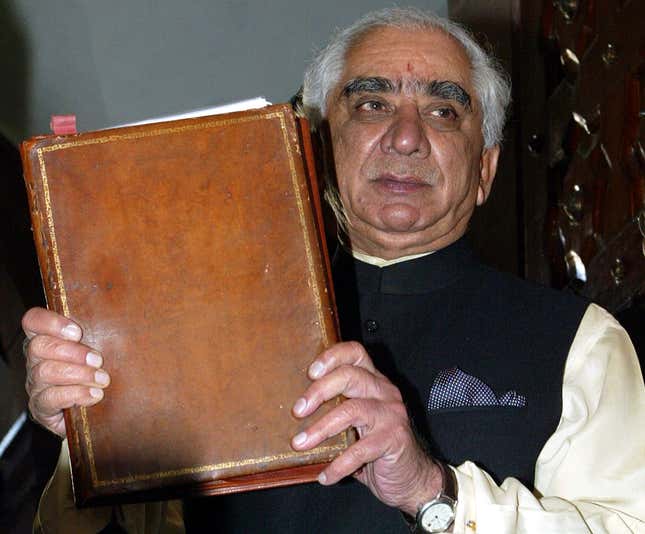
A veteran Bharatiya Janata Party (BJP) politician and a former army officer, Jaswant Singh served as India’s finance minister between 2002 and 2004, a period during which the country was battling slowing growth and a brutal drought. Under prime minister Atal Bihari Vajpayee, Singh held several other high-profile cabinet positions, including minister of defence and minister of external affairs.
P Chidambaram
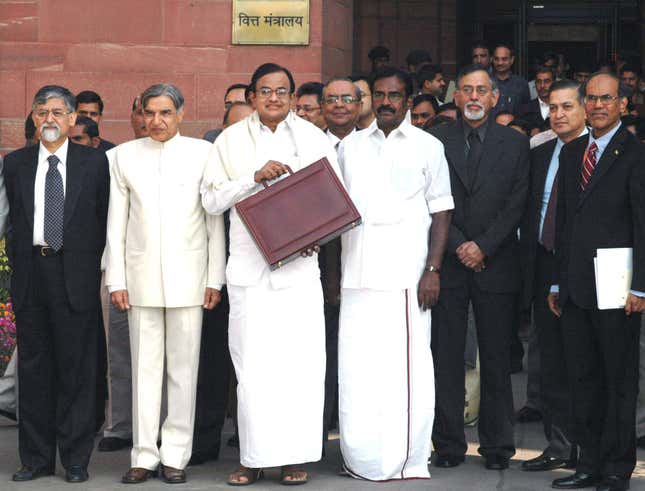
After Morarji Desai, P Chidambaram has presented the most number of budgets in India—nine, over three terms in the 1990s and 2000s. In 1997, Chidamabaram presented what was then dubbed the “dream budget” while serving under prime minister HD Deve Gowda. It is remembered for slashing the personal income tax rates that led to a surge in India’s income tax collections. He was also the first finance minister to include the proposal to move towards a unified goods and services tax in his budget speech in 2006.
Pranab Mukherjee
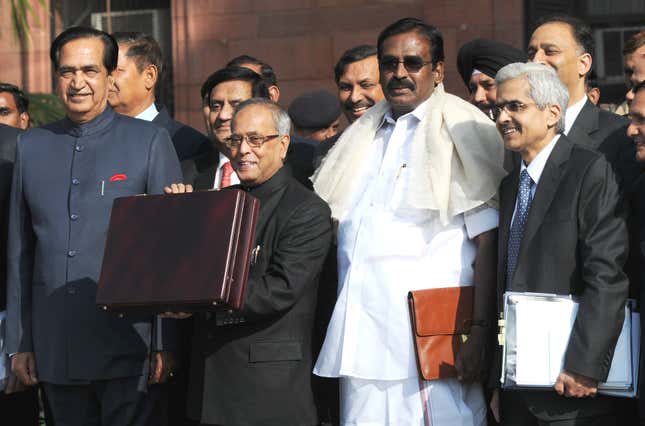
Pranab Mukherjee first served as finance minister in the 1980s under prime minister Indira Gandhi. He took the position once again in 2009 after serving as defence minister and then minister for external affairs under prime minister Manmohan Singh. He resigned from the position in 2012 after being selected as the United Progressive Alliance government’s candidate for the Indian presidency.
Arun Jaitley
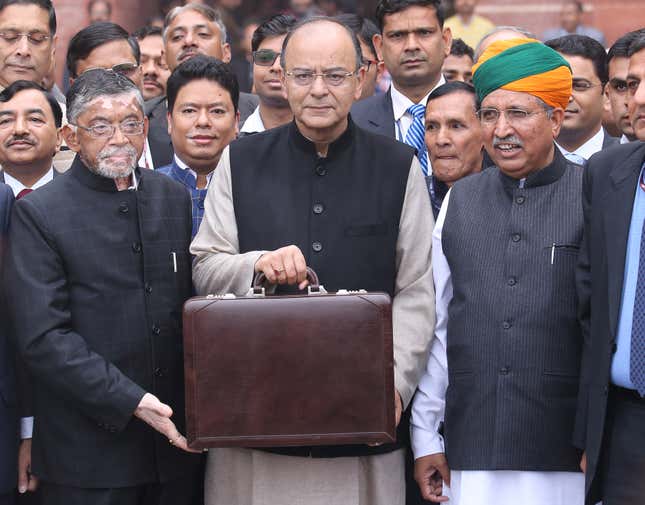
Jaitley has been India’s finance minister since 2014, when the Narendra Modi government came to power. Last year, he presided over several changes to the annual event, combining the country’s railway budget with the main budget for the first time in 92 years, and presenting it on the first day of February, instead of the last. This year, he’ll be presenting the fifth budget of his tenure on the morning of Feb. 01.
